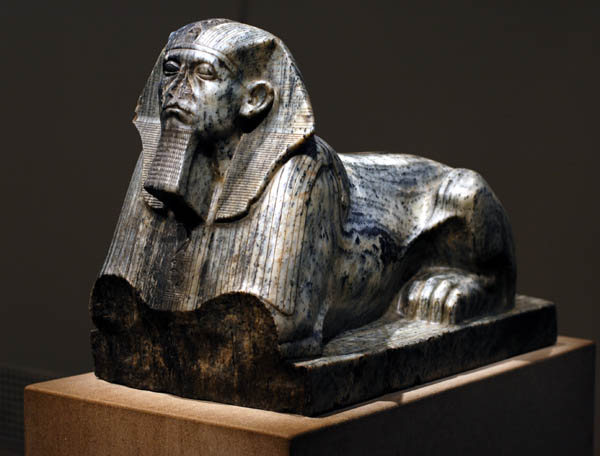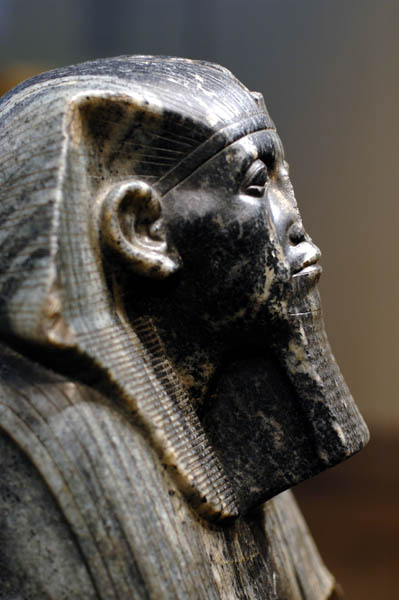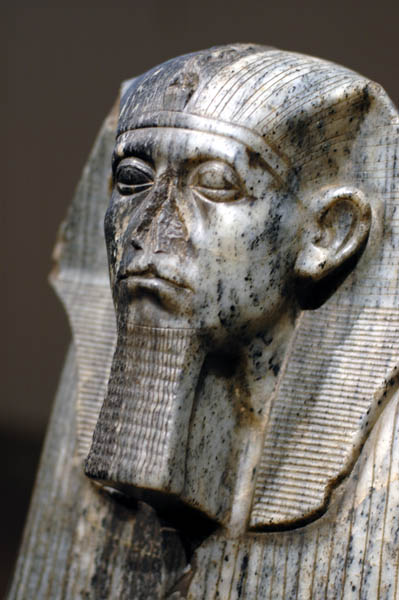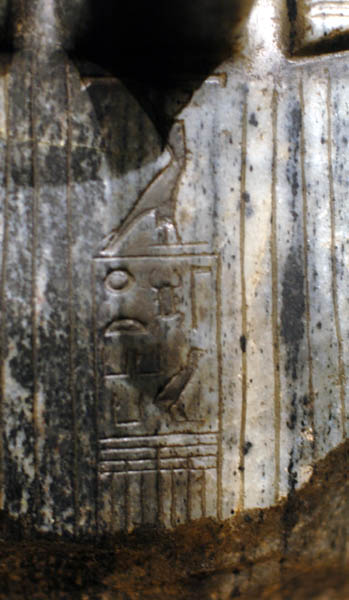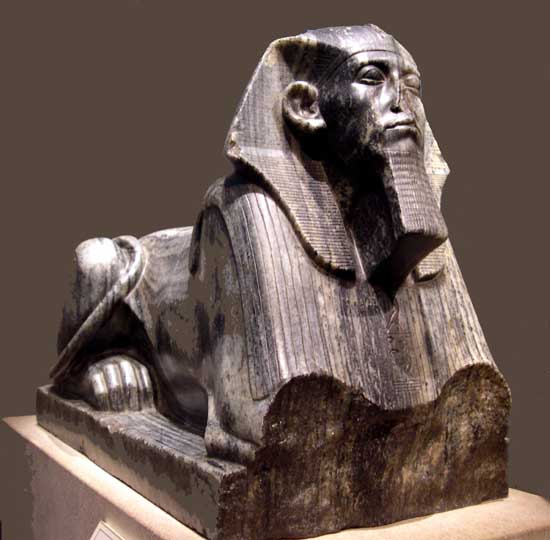
Gneiss statue of Senusret III, 12th Dynasty, from the temple of Karnak at Thebes. The form of the Sphinx with its royal bull's tail is an fine example of the artistic skill of the period.
Because of their strength, ferocity, imposing mane, and awesome roar, lions were associated with kingship since prehistoric times. As divine guardians against evil, they also symbolized in cosmic myths the place on the horizon where the sun was reborn every day. With the body of a lion and the head of a human, the sphinx symbolically combined the power of the lion with the image of the reigning king. In this magnificent example, the face belongs to Senůsret III of Dynasty 12. He wears a pleated linen headcloth, called a nemes headdress, which is symbolic of kingship. The nemes is surmounted by a cobra, which represents the goddess Udjo, one of the protectors of the king. The cobra's hood and head were either carved separately or they were repaired in antiquity, for there is an ancient dowel hole drilled into the neck.While the Egyptians viewed the standing sphinx as a conqueror, the crouching sphinx was a guardian of sacred places. Thus pairs of sphinxes flanked avenues or entrances to important buildings. This sphinx was carved from a single block of beautifully grained anorthosite gneiss from quarries in Nubia. The sculptor has used the pattern in the stone to great effect on the body of the lion and has masked the rather awkward transition from animal body to human head with the headdress and the stylized pattern representing the lion's mane.
